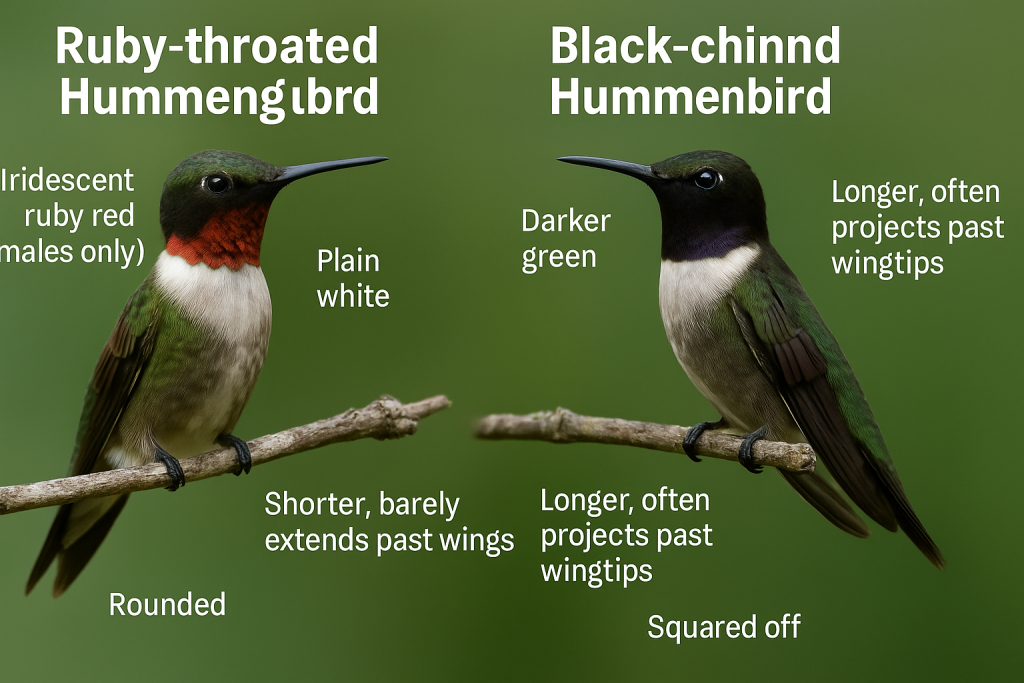
How to tell the difference between Roby-throated Hummingbirds vs. Black-chinned Hummingbirds. Texas Bird IDs Identification.
Ruby-throated vs. Black-chinned Hummingbird: Glitter Wars
| Field Mark | Ruby-throated Hummingbird | Black-chinned Hummingbird |
|---|---|---|
| Gorget (Throat Patch) | Iridescent ruby red (males only), looks black in poor light | Iridescent purple strip under black chin (males only) |
| Throat (females) | Plain white with faint streaking | Also white, but often with more fine gray streaks |
| Crown Color | Bright green crown and back | Darker green crown, sometimes looks dusky |
| Tail (in flight) | Tail is shorter, barely extends past wings | Longer tail, often projects past wingtips |
| Tail Shape (perched) | Tail ends are rounded | Tail looks more squared off |
| Call | Sharp, quick “tik” or “chewt” | Softer, more musical “tchew” |
| Range (especially Texas) | Migrates through all of Texas, common east of I-35 | Very common in Central & West Texas, rarer in East TX |
| Behavior | Feisty, agile, likes defending feeders | Also feisty, but with more aerial hovering displays |
| Male Display Dive | U-shaped dive with loud chirp at bottom | J-shaped dive, higher-pitched squeak at bottom |
| Unofficial Vibe | Dazzling show-off who wants everyone to notice his bling | Quiet goth cousin who only sparkles when the light’s just right |
Narrative: Ruby-throated vs. Black-chinned – The Sparkle Showdown
The Ruby-throated Hummingbird. Males have a brilliant, blinding red throat that can shift to black if the light’s not hitting it just right. Females and immature birds have plain white throats with light streaking.
The Black-chinned Hummingbird. Males have a black chin (thus the name) with a thin, sometimes hard-to-see purple band across the bottom. In poor lighting, the whole thing can just look dark—which often looks just like a Ruby.
Tail tips are another clue. The Ruby’s tail is shorter and rounded. The Black-chinned’s tail often projects past the wings and is squarer.
In Texas, location helps: East Texas? Probably a Ruby-throated. Central or West Texas? Bet on a Black-chinned. Caught in the middle? Check lighting, throat flash, tail length, and wing posture.

More Stories
What Are Feathered Doppelgangers?
Downey vs. Hairy Woodpeckers IDs
Double-crested vs. Neotropic Cormorants IDs